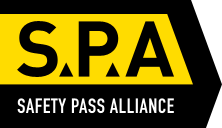Health News
Musculoskeletal Disorders (MSDs)
HSE’s 2014-15 statistics show that MSD injuries remain prevalent in the UK Food and Drink Sector. Of all the RIDDOR reports received by HSE for the Sector, 19% related to injuries from lifting and handling. Accordingly, HSE encourages employers to review their compliance with the law, and in doing so ask themselves:
- have they an effective policy on managing MSDs?
- are they avoiding hazardous manual handling operations so far as is reasonably practicable?
- if hazardous loads have to be manually handled, are they adequately assessing them by the using the ART Tool, MAC Tool, VMAC Tool, and RAPP Tool assessment toolkits, or others?
- as a result of this assessment, are they reducing the risk of injury so far as is reasonably practicable, via control measures (which include practical task-specific MSD training)?
HSE’s Food & Drink Manufacture Webpages has more information on MSD’s and managing MSD risks.
HSG196 – Moving Food & Drink publication can be downloaded for free from HSE’s Food & Drink webpages.
Download a free copy of A Recipe for Safety. This guidance covers the main health and safety hazards in the food and drink industries and gives practical advice on how to manage the associated risks including manual handling operation.
Guidance on Health Surveillance in the workplace
Health surveillance allows for early identification of ill health and helps identify any corrective action needed. Health surveillance may be required by law if your employees are exposed to noise or vibration, solvents, fumes, dusts, biological agents and other substances hazardous to health, or work in compressed air.
The Health and Safety Executive (HSE) has published online guidance and guidelines on health surveillance needed where, even after all precautions are taken, there is still a risk that workers may be exposed to chemicals or other hazardous substances. View the Guidance on HSE’s Website.
Analytic services and assays 2016/2017
HSE’s Health and Safety Laboratory can help ensure worker health protection by offering a wide range of analytical services for asthmagens and sensitisers such as isocyanates, soya, shellfish and wheat flour.
The new brochure of analytical services for 2016-17 is now available and can be found on HSL’s Website.
News from HSE
Health and safety at work poster
To compliment the publication of HSE’s annual statistics on health and safety in Great Britain, HSE have published a poster – Vital Statistics 2015. You can purchase this poster by visiting HSE’s Publications Website.
Free-to-download Safety Wizard app
A developer has launched a free-to-download health and safety app to help small to medium-sized businesses (SMEs) manage common workplace risks. The SME Safety Wizard app is structured around HSE’s Toolbox guidance.
As too many people overcomplicate health and safety, we are pleased that developers see that HSE’s guidance provides them with a free resource of clear and easy to understand content, needed to turn into apps.
Fines & Prosecutions
Many prosecutions in the Food & Drink Manufacturing Sector are for machinery accidents and lack of guarding. HSE have webpages dedicated to machinery safety, guarding and plant and equipment maintenance.
Visit HSE’s Machinery Webpages for more information.
Below are a selection of recent prosecutions relating to machinery accidents.
Worker seriously injured in wheat and barley silo
A wheat and barley blending plant has been fined after a worker was seriously injured whilst unblocking wheat in a silo. The worker suffered severe lacerations to his foot and lower leg leading to surgical amputation. More information on the accident and fine can be found on HSE’s Press Release.
Worker struck by tray on unguarded tipping machine at mushroom farm
A mushroom farm in West Sussex has been fined after an employee was injured whilst making an adjustment to an unguarded machine when he was hit in the face by a full tray of mushrooms. A full tray can contain up to 400lbs of mushrooms. More information on the accident and fine can be found on HSE’s Press Release.
Worker injures hand in unguarded machine
A supplier of dried fruit, nuts and seeds was fined after a worker lost part of her finger while attempting to clear a blockage. More information on the accident and fine can be found on HSE’s Press Release.
For more information on workplace transport including safety when operating fork lift trucks visit HSE’s Transport Webpages.
Worker suffers serious and arm injuries at chocolate company
A Chocolate manufacturer has been prosecuted after a worker suffered serious hand and arm injuries whilst cleaning a chocolate enrobing machine. More information on the accident and fine can be found on HSE’s Press Release.
Spalding food firm fined after employee injured hand in machine
A food manufacturing firm has been fined after an employee had two fingers severed in a workplace incident after his hand came into contact with the paddles of a mixing machine while he was cleaning it. More information can be found on HSE’s Press Release.
Worker loses part of finger in pie machine
A London company who produces cakes and pastries has been fined after a worker lost part of her finger in a pie and tart machine as she used her right hand index finger to scoop additional dough from the dough depositor outlet while the machine was still running. More information on the accident and fine can be found on HSE’s Press Release,
Salad company fined after employee loses finger tips in bagging machine accident
A company who grow and package salads have been fined after an employee lost the tips of two fingers in a bagging machine. The operator of the bagging machine had reached under the guard to pull film through it when the heat sealing and cutting jaws of the machine closed on his fingers. More information can be found on HSE’s Press Release.
Brentford food product company fined
A food product manufacturer has been fined after a worker suffered injury when he became entangled in machinery after being able to open a guard door, that should have stopped him getting access to dangerous parts of moving machinery, in the production area. More information on the accident and fine can boe found on HSE’s Press Release.
Other recent prosecutions
Food company fined after asbestos disturbed in refurbishment
A food company and their contractor have been fined after asbestos was disturbed during building work and only identified by chance when an asbestos removal contractor attended site. More information on the fine can be found on HSE’s Press Release.
Caustic burns to worker at food manufacturing company
A Bradford food manufacturing company was sentenced for safety breaches after a worker suffered chemical burns.The employee suffered chemical burns to the left side of his face and arms when a hose carrying a caustic substance spilt spraying him with the solution. More information can be found on HSE’s Press Release.
Pet food manufacturer fined after teenage worker injured
A Nottinghamshire pet food company has been sentenced after a worker was seriously injured when a forklift truck he was driving overturned. As he jumped clear, the truck fell onto him leaving him with serious lower limb injuries. More information on the accident and fine can be found on HSE’s Press Release.
|
 [3] and guidance at
[3] and guidance at



















